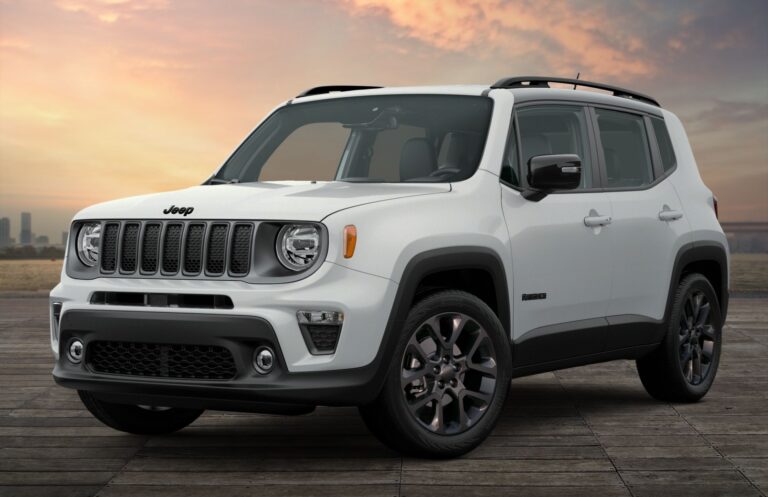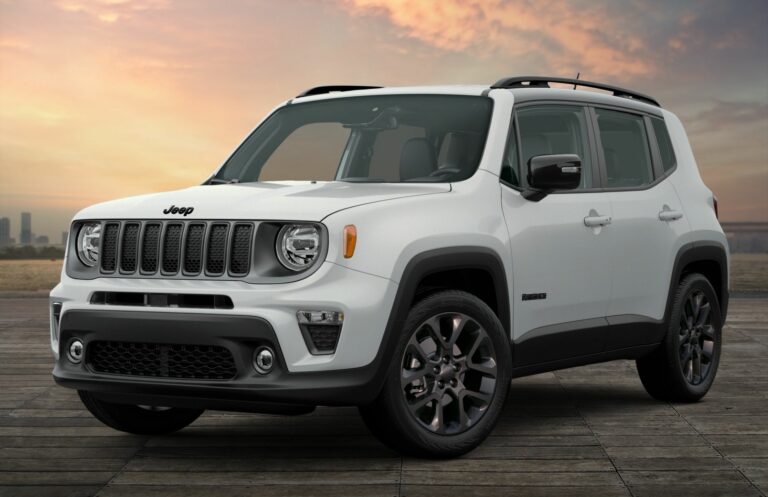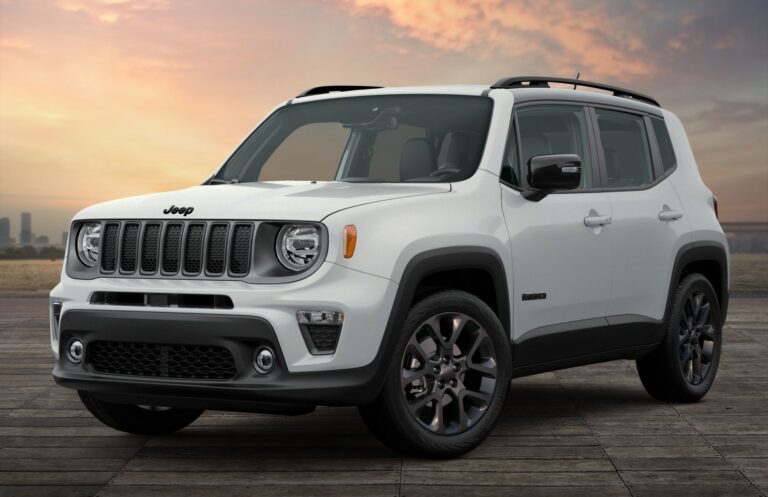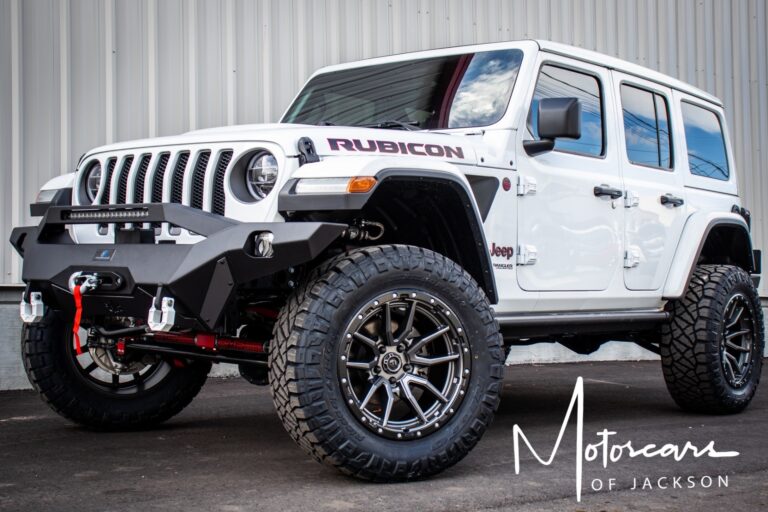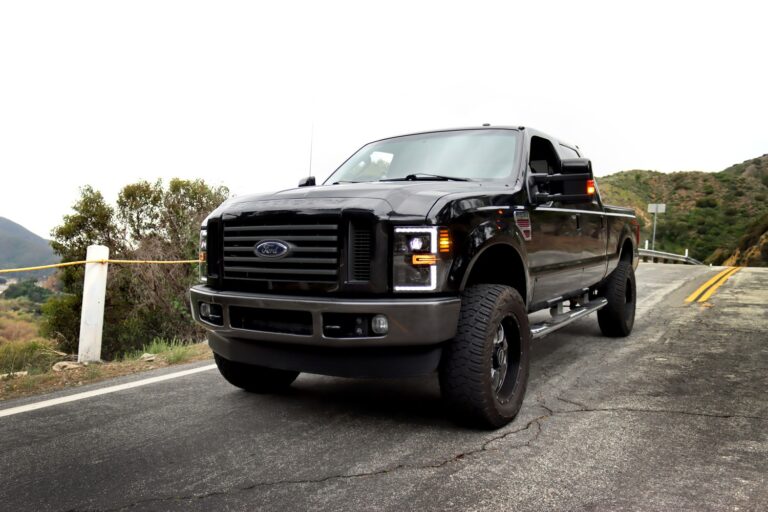The Ultimate Guide to the 98 Jeep Cherokee Lift Kit: Elevating Your XJ’s Potential
The Ultimate Guide to the 98 Jeep Cherokee Lift Kit: Elevating Your XJ’s Potential jeeps.truckstrend.com
The 1998 Jeep Cherokee (XJ) holds a legendary status in the off-roading community. Known for its unibody construction, solid axles, and robust powertrain, the XJ is a highly capable and affordable platform for customization. One of the most popular and impactful modifications for any XJ enthusiast is the installation of a lift kit. A 98 Jeep Cherokee lift kit isn’t just about making your vehicle look tougher; it’s a fundamental upgrade that unlocks a new realm of off-road capability, allowing you to tackle more challenging terrain and fit larger, more aggressive tires.
This comprehensive guide will delve into everything you need to know about lifting your 1998 Jeep Cherokee, from understanding the components and benefits to navigating the installation process and potential challenges.
The Ultimate Guide to the 98 Jeep Cherokee Lift Kit: Elevating Your XJ’s Potential
Why Lift Your 98 Jeep Cherokee XJ? The Benefits Unveiled
Lifting your XJ brings a multitude of advantages, transforming its performance and aesthetics:
- Increased Ground Clearance: This is perhaps the most significant benefit. A higher suspension raises the vehicle’s undercarriage, reducing the risk of scraping rocks, roots, or other obstacles that could damage vital components like differentials, transfer cases, and exhaust systems.
- Accommodate Larger Tires: Lift kits are essential for fitting bigger tires, which are crucial for enhanced traction, flotation over soft terrain, and improved articulation. Larger tires also contribute to the overall ground clearance.
- Improved Approach, Departure, and Breakover Angles: These critical off-road metrics dictate how steep an incline or decline your vehicle can approach or depart from without scraping, and how easily it can crest a hill or obstacle without getting hung up. A lift kit significantly improves all three.
- Enhanced Articulation: By allowing greater wheel travel, a lift kit enables your axles to flex more independently, keeping tires in contact with the ground over uneven terrain. This improves traction and stability when navigating challenging obstacles.
- Aggressive Aesthetic Appeal: Let’s be honest, a lifted XJ just looks cooler. The taller stance and larger tires give it an undeniably rugged and capable appearance that turns heads on and off the road.
- Customization and Personalization: A lift kit is often the first step in a long journey of customizing your XJ to suit your specific off-roading style and preferences, making it truly your own.

Understanding the Components of a 98 Jeep Cherokee Lift Kit
A typical lift kit for a 1998 Jeep Cherokee involves replacing or modifying several key suspension components. The exact parts included will vary based on the lift height and kit manufacturer, but here are the most common:
- Coil Springs (Front): Replaces the factory front coil springs with longer, often stiffer, springs to achieve the desired lift height.
- Leaf Springs (Rear) or Add-a-Leaf/Shackles: For the rear, full leaf spring packs are ideal for significant lift and improved ride, while "add-a-leaf" kits (inserting an extra leaf into your existing pack) or longer shackles offer more budget-friendly lift.
- Extended Shocks: Crucial for allowing the increased wheel travel provided by the new springs. Factory shocks are too short and would limit articulation and damage themselves.
- Control Arms (Front Lower/Upper): Connect the front axle to the unibody. For lifts over 2.5-3 inches, adjustable control arms are highly recommended to correct caster angles and prevent steering issues. Long-arm kits replace these with much longer arms, improving articulation and ride quality on extreme lifts.
- Adjustable Track Bar (Front): Re-centers the front axle after lifting. Without one, the axle will shift to one side, leading to steering issues and potential "Death Wobble."
- Sway Bar Disconnects: Allow you to disconnect the front sway bar for maximum articulation off-road, then reconnect it for stable on-road driving.
- Brake Line Extensions: Longer brake lines are often necessary to prevent them from stretching or breaking at full suspension droop.
- Transfer Case Drop or Slip Yoke Eliminator (SYE): For lifts 3 inches and above, these are often required to correct driveline angles and prevent vibrations. A TC drop lowers the transfer case slightly, while an SYE replaces the output shaft of the transfer case with a flanged output, allowing for a longer driveshaft with a CV joint.
- Bump Stops: Extended bump stops prevent your suspension from bottoming out and damaging shocks or other components.
![]()
Types of Lift Kits for Your 98 XJ: Choosing Your Path
Lift kits for the 98 XJ generally fall into a few categories based on the desired lift height and complexity:
-
Budget Boosts (1-2 Inches):
- Components: Coil spacers (front), longer shackles or add-a-leaf (rear). May or may not include shocks.
- Purpose: Minimal lift, primarily for fitting slightly larger tires (e.g., 30-31 inches) or leveling the vehicle. Least expensive option.
- Considerations: Retains factory ride quality if shocks are not replaced. Limited off-road improvement.
-
Mild Lifts (2.5-3 Inches):
- Components: Full replacement coil and leaf springs, extended shocks. Often includes a transfer case drop and sometimes an adjustable track bar.
- Purpose: Good balance for daily driving and moderate trail use. Can fit 31-32 inch tires.
- Considerations: May experience minor driveline vibrations without an SYE. An adjustable track bar is highly recommended.
-
Moderate Lifts (3.5-4.5 Inches):
- Components: Full replacement springs, extended shocks, adjustable control arms (lower are critical, uppers are good), adjustable track bar, sway bar disconnects, brake line extensions. An SYE is almost always required.
- Purpose: Significant off-road capability, allowing 32-33 inch tires (potentially with fender trimming).
- Considerations: More complex installation, higher cost, and may require further drivetrain modifications.
-
Extreme Lifts (5+ Inches):
- Components: Long-arm suspension systems, custom coil/leaf spring setups, heavy-duty steering components, SYE, often custom driveshafts, reinforced axles, and extensive fender trimming.
- Purpose: Dedicated off-road vehicles, rock crawling, and serious trail use. Can fit 33-35+ inch tires.
- Considerations: High cost, complex installation, requires significant additional modifications, impacts daily drivability.
Choosing the Right Lift Kit: Practical Advice
Before you buy, ask yourself these questions:
- What is my primary intended use? Daily driver, weekend warrior, dedicated trail rig?
- What tire size do I plan to run? This is often the biggest driver for lift height.
- What is my budget? Factor in not just the kit cost but also potential hidden costs like alignment, new tires, or professional installation.
- How comfortable am I with DIY installation? Higher lifts involve more complex tasks.
- What kind of ride quality do I desire? Some kits prioritize articulation, others on-road comfort.
Research specific kit brands and read reviews from other XJ owners. Don’t cheap out on critical components like shocks, control arms, and track bars; these directly impact ride quality, steering, and safety.
Installation Overview & Key Considerations
While a full step-by-step guide is beyond this article’s scope, here’s an overview of what to expect and crucial considerations:
- Safety First: Always use sturdy jack stands on a level surface. Never work under a vehicle supported only by a jack. Chock the wheels.
- Tools: You’ll need a good set of sockets and wrenches, a torque wrench, penetrating oil (for rusted bolts), and possibly a spring compressor (though many XJ lifts don’t require one).
- Rusted Bolts: Be prepared for seized or rusted bolts, especially on older XJs. Have a grinder, cut-off wheel, or torch ready if necessary.
- Step-by-Step (General):
- Lift the vehicle and secure it on jack stands. Remove wheels.
- Support axles with a floor jack.
- Disconnect shocks, sway bar links, and brake lines (if replacing).
- Remove old coil springs (front) and leaf springs (rear).
- Install new coil springs, leaf springs/add-a-leaf/shackles.
- Install extended shocks.
- Install new control arms, track bar, and sway bar disconnects (if included).
- Install transfer case drop or SYE.
- Reconnect brake lines or install extensions.
- Lower vehicle, torque all bolts to spec.
- Post-Installation:
- Alignment: Crucial! Get a professional alignment immediately after installation to correct caster and toe, preventing premature tire wear and steering issues like "Death Wobble."
- Test Drive: Drive slowly at first, listening for new noises or vibrations.
- Re-torque: After 50-100 miles, re-torque all bolts, as they can settle.
Potential Challenges and Solutions
Lifting an XJ isn’t always plug-and-play. Here are common issues and their solutions:
- Driveline Vibrations: Common with lifts over 2.5-3 inches due to altered driveshaft angles.
- Solutions: Transfer Case Drop (TC drop) is a cheaper option but reduces ground clearance. A Slip Yoke Eliminator (SYE) kit with a CV driveshaft is the ultimate solution, providing better angles and greater strength.
- "Death Wobble": A violent, uncontrollable shaking of the front end, often triggered by a bump.
- Solutions: Not directly caused by a lift, but often exacerbated by it. Usually a symptom of worn steering or suspension components (track bar, tie rod ends, ball joints, control arm bushings) or improper alignment/tire balance. Ensure all components are tight and in good condition, and get a professional alignment.
- Brake Line Length: Factory lines can be too short at full droop.
- Solutions: Install extended brake lines or relocation brackets.
- Steering Geometry Issues: Lifts alter caster angle, affecting steering stability and return-to-center.
- Solutions: Adjustable control arms allow you to correct caster. A good adjustable track bar is essential for centering the axle and preventing wobble.
- Fender Trimming: Larger tires, especially when articulating, may rub the fenders.
- Solutions: Trimming the fenders (cutting away portions of the metal) or installing aftermarket fender flares with more clearance.
98 Jeep Cherokee Lift Kit Price Table
This table provides estimated price ranges for complete lift kits for the 1998 Jeep Cherokee. Prices can vary significantly based on brand reputation, component quality (e.g., fixed vs. adjustable control arms, specific shock types), and whether additional driveline components are included. Installation costs are not included.
| Lift Height (Inches) | Kit Type/Category | Key Components Included (Common) | Estimated Price Range (USD) | Notes |
|---|---|---|---|---|
| 1-2" | Budget Boost | Coil Spacers, Rear Shackles/Add-a-Leaf (sometimes shocks) | $150 – $400 | Good for leveling or minor tire increase (30-31"). Minimal off-road gain. |
| 2.5-3" | Mild Kit | New Coil Springs, New Leaf Springs/Full Pack, Extended Shocks, TC Drop (optional) | $400 – $800 | Excellent balance for daily driving & light trails. Fits 31-32" tires. May need adj. track bar. |
| 3.5-4.5" | Moderate Kit | New Coils/Leafs, Extended Shocks, Adjustable Lower Control Arms, Adjustable Track Bar, Sway Bar Disconnects, Brake Line Ext. | $800 – $1,500 | Significant off-road improvement. Fits 32-33" tires. SYE highly recommended/required. |
| 4.5-6" | Advanced Kit | All Moderate Kit components, often includes Adjustable Upper Control Arms, Heavy-Duty Steering, SYE/CV Driveshaft | $1,500 – $2,500+ | Serious off-road capability. Fits 33-35" tires (may require trimming). Ride quality improves with long arms. |
| 6"+ | Extreme/Long Arm | Long Arm Kit, Custom Coils/Leafs, High-End Shocks, SYE/CV Driveshaft, Heavy-Duty Steering | $2,500 – $5,000+ | For dedicated rock crawling and extreme trails. Requires extensive modifications. |
Note: These prices are estimates for the kit components only and do not include installation labor, alignment, or the cost of new tires.
Frequently Asked Questions (FAQ) about 98 Jeep Cherokee Lift Kits
Q1: How long does it take to install a lift kit on a 98 XJ?
A1: For an experienced DIY mechanic, a mild 2-3 inch lift might take 6-10 hours. A moderate 3.5-4.5 inch lift with more components (control arms, track bar, SYE) could take 12-20 hours or even a full weekend. Rust and seized bolts can significantly increase installation time. Professional installation will vary by shop.
Q2: Do I need new tires after lifting my XJ?
A2: While not strictly required immediately, a lift kit is usually installed to accommodate larger tires. Your stock tires will look small, and you won’t fully benefit from the increased clearance until you upgrade your tire size.
Q3: Will lifting my XJ affect its daily driving manners?
A3: Yes, to some extent. A well-designed and properly installed lift kit with quality components can maintain good on-road manners. However, higher lifts may result in a firmer ride, increased road noise (from larger tires), and slightly less precise steering. Proper alignment is critical to minimize negative impacts.
Q4: What is "Death Wobble" and how do I avoid it?
A4: Death Wobble is a violent, uncontrollable oscillation of the front wheels, typically occurring at highway speeds after hitting a bump. It’s often caused by worn or loose steering/suspension components (track bar, tie rod ends, ball joints, control arm bushings) or improper alignment/tire balance. To avoid it, ensure all front-end components are in excellent condition, use an adjustable track bar, and get a professional alignment after lifting.
Q5: Do I need a Slip Yoke Eliminator (SYE) kit?
A5: For lifts of 3 inches or more, an SYE kit with a CV driveshaft is highly recommended. It corrects the driveline angles that become problematic with higher lifts, preventing vibrations and potential damage to the transfer case. For 2-3 inch lifts, a transfer case drop kit might suffice to mitigate vibrations, but an SYE is the superior long-term solution.
Q6: Will my gas mileage change after lifting?
A6: Yes, expect a decrease in fuel economy. This is due to increased aerodynamic drag from the lift and larger, heavier, more aggressive tires, as well as the additional rotating mass.
Q7: Do I need an alignment after installing a lift kit?
A7: Absolutely, yes. A professional alignment is mandatory after any significant suspension modification. It corrects critical angles like caster, camber, and toe, which are altered by the lift. Proper alignment ensures safe handling, prevents premature tire wear, and helps avoid steering issues.
Conclusion
Lifting your 1998 Jeep Cherokee is one of the most rewarding modifications you can undertake. It transforms a capable SUV into an off-road beast, ready to conquer new trails and turn heads wherever it goes. By understanding the components, choosing the right kit for your needs, and addressing potential challenges with proper solutions, you can significantly enhance your XJ’s performance and longevity.
Whether you’re aiming for a subtle boost for larger tires or a comprehensive long-arm system for extreme rock crawling, the world of 98 Jeep Cherokee lift kits offers endless possibilities. With careful planning and execution, you’ll elevate your XJ, and your off-road adventures, to new heights.


